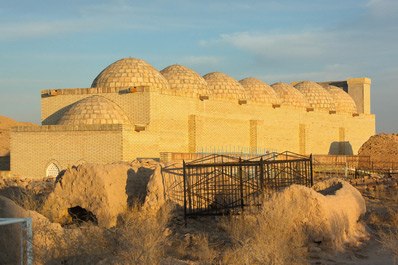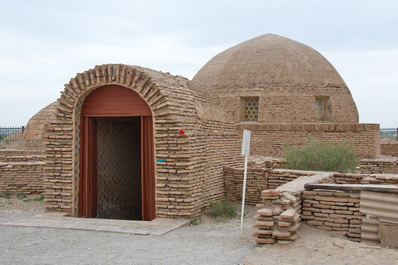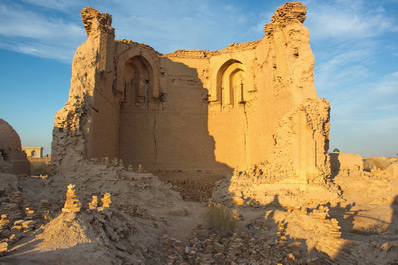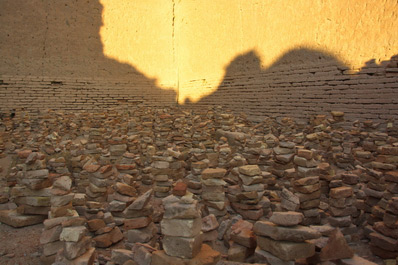Mizdakhan Necropolis, Karakalpakstan
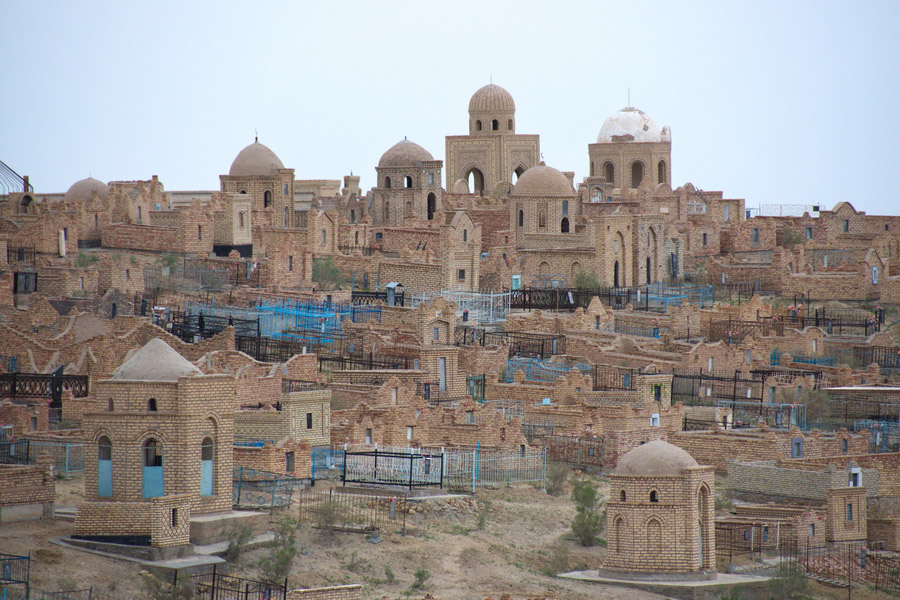
Mizdakhan Necropolis is one of the largest and oldest burial complexes in Central Asia. Located near the town of Khodzheyli, 15 kilometers from Nukus, the site spans around 200 hectares and contains more than two thousand graves from various historical periods, ranging from antiquity to the late Middle Ages. The architectural diversity of the necropolis reflects the region’s rich tapestry of cultural and religious influences.
History
The origins of Mizdakhan trace back to the IV century BC, when the Gyaur-Kala fortress was built on a nearby hill. This strategic stronghold long served as a defensive outpost for surrounding settlements. Even in those early times, burials began to appear, likely linked to Zoroastrian practices. One of the most distinctive elements from this era are ossuaries - specially crafted containers for human bones - which archaeologists have found in the deeper layers of the necropolis.
In the VII and VIII centuries, the arrival of Arab conquerors ushered in the spread of Islam. During this period, domed mausoleums began to take shape across the necropolis, gradually transforming it into a revered spiritual site for local communities and pilgrims. Yet the legacy of older traditions still echoes in Mizdakhan. Even the name of the site may derive from Ahura Mazda, the Zoroastrian god honored in the Avesta as the “One Creator and Ruler of the World”.
By the XI and XII centuries, Mizdakhan flourished alongside the broader prosperity of the region. Residential quarters, workshops, markets, and mosques emerged around the necropolis. Its prominence continued into the XIV and XV centuries, though the decline of the Golden Horde saw a gradual decrease in activity. Nonetheless, the site remained an important pilgrimage destination and sacred ground for the local population.
Main Mausoleums
Mizdakhan Necropolis contains more than a hundred tombs, many crowned with stately domes. Several monuments stand out for their historical and architectural significance.
The Shamun-Nabi Mausoleum is among the most enigmatic structures at Mizdakhan. According to legend, it houses the remains of Shamun-Nabi, a magician endowed with supernatural powers. The elongated building features a towering entrance portal and seven domes, with a massive sarcophagus over 25 meters long inside. Folklore claims the tomb grows each year, drawing comparisons to the shrine of the Prophet Daniel in Samarkand.
The Mazlumkhan-Sulu Mausoleum is a partially subterranean, portal-domed structure dating to the first half of the XIV century. Its richly decorated interior is adorned with azure majolica and intricate muqarnas in the corner niches. Scholars suggest it originally served as a place of prayer and Zoroastrian ritual before being repurposed for burials. Later, facilities for pilgrims and religious officials were added, making Mazlumkhan-Sulu a multifunctional sanctuary deeply venerated in ancient times.
The Mausoleum of Khalifa Erezhep consists of the ruins of a once-impressive tomb from the XII to XIV centuries. Only fragments of its walls and dome remain. Local lore claims this is the burial place of Erezhep (Rajab), an early Muslim preacher in Central Asia. Another version identifies it as the final resting place of the biblical Adam. In Zoroastrian belief, the first man was Gayomard - a mortal progenitor created by the Divine. According to tradition, his tomb lies deep within this mausoleum.
This tomb is also linked to the so-called “World Clock” myth - a belief that time until the end of the world is measured here. Pilgrims say that each year, one brick falls from the mausoleum walls, and once the structure completely collapses, the world will end. In a symbolic gesture to avert this fate, visitors gather the fallen stones and stack them into seven-block columns - a number signifying completeness in Islamic tradition.
Mizdakhan Necropolis stands as a living chronicle of Central Asia’s spiritual and cultural heritage, where Zoroastrian, Islamic, and ancient traditions converge. Its architectural relics, timeworn graves, and traces of bygone urban life continue to captivate archaeologists and travelers alike, slowly unveiling the layers of its mysterious past.


